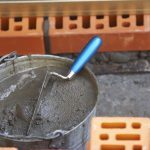What could be simpler than self-pouring the screed, because all that is required is to mix the components and fill the floor, however, in fact, everything is not as simple as it seems. With the wrong organization of the process, you can get many different defects that will have to be fixed. The most common mistake made when installing the floor is a wet foundation, so it is better to play it safe and find out in advance what the screed will lead to on a wet foundation.
Most often, if the base is not sufficiently dry, bloating appears. It can be represented by either single or multiple bubbles, on the surface of which cracks can form and destroy the coating.




In order to eliminate swelling, they must be removed. To do this, the formed bubbles are removed with a spatula or grinder. Next, the floor must be cleaned of dust and debris using a vacuum cleaner, and then wet cleaning. After complete drying, the places of defects are primed, possibly several times, then filled with a mixture: for cement floors, use cement putty, the polymer is universal and can be used for both polymer and concrete coatings.

When small cracks are formed, a grinder is used to eliminate them. With its help, the crack expands along the entire length. Then dirt is removed from the walls, treated with a primer and dries. If necessary, processing can be repeated. After this, the crack is filled with cement or polymer putty and is leveled out flush with the rest of the surface.

Sometimes cracks can be accompanied by delamination, a process called coiling. In this case, the surface is torn off from the base, as a result, the fragment is unconnected with anything and moves underfoot.

To eliminate the bump, remove the departed area, clean the base from dust and dirt with a vacuum cleaner, walk with a damp cloth, wait for drying and apply a primer. It is advisable to prime the surface several times.

Next, the defect is poured with a mixture flush with the rest of the surface. To make the result better, you can additionally cover the floor with a top coat.
From the foregoing it follows that any defects and deformations can be corrected, but it is better not to make technological errors and wait for the base to completely dry before pouring it.

-
 What difficulties you need to know before choosing a mosaic
What difficulties you need to know before choosing a mosaic
-
 5 types of work in which draft is strictly prohibited
5 types of work in which draft is strictly prohibited
-
 How to create coziness and harmony in the house
How to create coziness and harmony in the house
-
 Why is laminate flooring considered the best flooring?
Why is laminate flooring considered the best flooring?
-
 Is cheap plumbing really so bad
Is cheap plumbing really so bad
-
 Chalet style: design principles, primary colors
Chalet style: design principles, primary colors
-
 Aligning the ceiling in a "wet" and "dry" way: which is better?
Aligning the ceiling in a "wet" and "dry" way: which is better?
-
 Care and cleaning of linoleum
Care and cleaning of linoleum
-
 Upholstery fabrics: types and their advantages
Upholstery fabrics: types and their advantages
-
 The main features of the choice of suburban housing
The main features of the choice of suburban housing
-
 What type of laminate does not last you long
What type of laminate does not last you long
-
 Why was ash added to the mortar in masonry before
Why was ash added to the mortar in masonry before
New publications are published daily on our channel in Yandex. Zen
Go to Yandex. Zen


